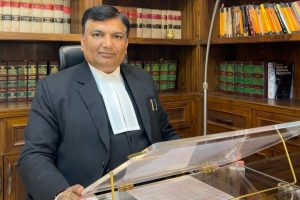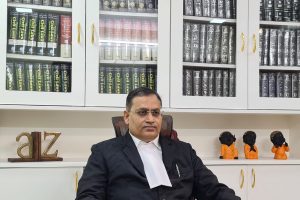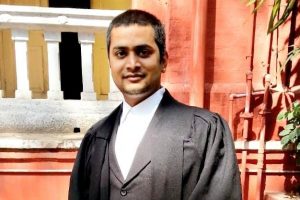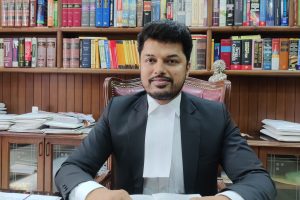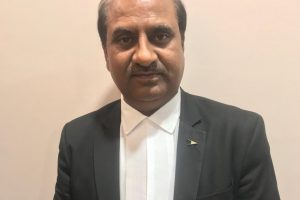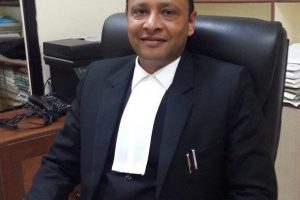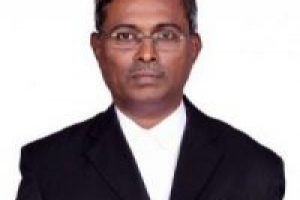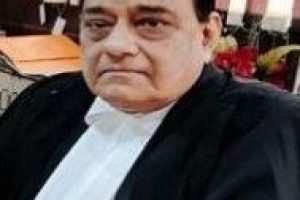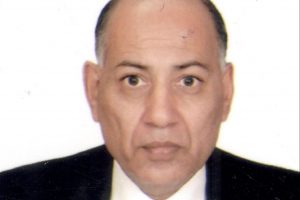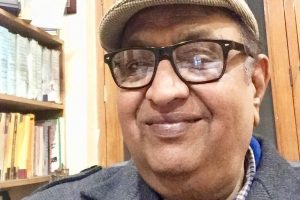Human Rights : Concept and Enforcement
Notice: Undefined index: _wpupa_attachment_id in /home/lawfindbl/public_html/wp-content/plugins/wp-user-profile-avatar/templates/wp-author-box-social-info.php on line 90
Notice: Trying to access array offset on value of type null in /home/lawfindbl/public_html/wp-content/plugins/wp-user-profile-avatar/templates/wp-author-box-social-info.php on line 90
Introduction
These days we are having many discourses on human rights. On December 10th every year we celebrate and commemorate these rights very meticulously. The General Assembly of the United Nations Organisation passed a resolution 217-A (III) on 10th December, 1948 known as the Universal Declaration of Human Rights (UDHR). The heart of UDHR articles, as given in Articles (1) and (2), is that:
“human beings are born free and equal in dignity and rights, and that they are endowed with reason and conscience and should act towards one another in a spirit of brotherhood,” and “Everyone is entitled to all the rights and freedoms set forth in this Declaration, without distinction of any kind, such as race, colour, sex, language, religion, political or other opinion, national or social origin, property, birth or other status.”
The Concept and Nature of Human Rights
Human Rights are rights that all persons have simply because they are human beings; because they are persons. Human rights are those natural rights which are inherent in our nature precisely as ‘human’ and without which we cannot live as human beings. Hence to understand human rights one ought to understand what ‘human person’ and ‘human life’ are all about; the nature of human personality and the dignity of human life need to be adequately assessed in order to comprehend human rights adequately.
The meaning that we ordinarily give to the concept of human rights goes beyond the description given in the “Protection of Human Rights Act, 1993” in India by which the National Human Rights Commission (NHRC) was constituted. Explaining the phrase “human rights”, paragraph 2(d) says:
“Human rights mean the rights relating to life, liberty, equality and dignity of the individual guaranteed by the Constitution or embodied in the International Covenant and enforceable by courts in India.”
As clear from this definition, the Act is talking of the human in human rights in an individual sense, not in a collective, communitarian or relational category. The anthropological understanding of the human here is in an isolated individual category. But today we talk of a relational anthropology. An authentic and adequate understanding of the human is in a corporate, relational and communitarian character. Here we have to go beyond our definition of a person as a ‘rational being’ and re-define a human being as a “rational and relational being-with” (a ratio- relational being-with). I am not just a person but a person-with. My very entity is embedded in a socio-relational, corporate, and communitarian character of interdependency. In the otherness of the other I find my identity (Buber). Only an integral view of human rights that takes into consideration of both individuals and groups, including the rights of humanity as such, can provide a dynamic future to the human rights discourse. A realization of the complexity of the human rights debate can take us to a holistic and integral approach to human rights.
The concept of ‘right’ too is not free from ambiguities. Trying to clarify the concept in the judicial context, Wesley Newcomb Hohfeld, an eminent jurist, talks of four things, viz. claims, liberties, powers, and immunities. Thus one can talk of ‘claim rights’, ‘liberty rights’, ‘power rights’, and ‘immunity rights’. They are described and thus considered as legal advantages. These four legal advantages are juxtaposed with ‘opposites’ and ‘correlates’ (which he calls ‘legal disadvantages’). Thus he expanded and generated eight fundamental conceptions of ‘right’.
The rights that humans have could be put in the categories of positive rights and moral rights. A positive right belongs to the realm of what is, and moral right belongs to the category of what ought to be. In an authentic humanisation process the positive should continuously strive to the moral.
Human Rights as Moral Rights
Human rights are moral rights. “Moral” indicates that they are based on a valid moral principle. To call a principle “moral”, in turn, is to indicate that certain requirements for action are obligatory. Hence human rights are rights, which imply obligatory requirements for action. Besides moral rights, there are legal rights, prudential and intellectual rights. The difference among these rights is based on the different justifying criteria for these rights. For example legal rights are based on statutes and other laws.
Earlier philosophers called these rights “Natural rights”, meaning that they are rights derived from the nature of the individual, and existing for one’s welfare. They differ from civil rights, which are derived from society or the state, and are intended for a social or a civil purpose. The right to vote, the right to hold a public office, are examples of social or civil rights. A natural right neither proceeds from nor is primarily designed for a civil end, and so it cannot be annulled, even by the State. For example right to life and the right to liberty are so sacred to an individual, so necessary to one’s existence and welfare, that even the State may not rightfully kill an innocent person, nor punish an innocent one to prison. There are people who argue that a State does not have the right for capital punishment even of guilty people. A natural right neither proceeds from nor is primarily designed for a civil end, and so it cannot be annulled, even by the state.
Three main kinds of Natural Rights
Though natural rights are all equally valid, they differ with respect to their basis, their urgency, or importance. We may distinguish three principal types of Natural Rights.
Human Rights of the First Category
The first type is exemplified in an individual’s right to live. The object of this right, life, is intrinsically good, i.e., good for its own sake, an end in itself. It is an end to which even the civil society and/or the state is a means. Since life is good intrinsically, the right to life is also valid intrinsically.
Human Rights of the Second category
Among the natural rights of the second category are the right to enjoy personal freedom, the right to marry, right to education, the right to own consumption-goods such as food and clothing. The objects of these rights are not ends in themselves, but means to human welfare. It is an indispensable means to reasonable life in the majority of persons. Right to education may belong to this category; social association might belong to this category. One could say that the right to the HIV/aids infected for care and protection belongs to the second category of the natural rights. Of course, as far as they have a right to live, as any person in a society, they too have the right of the first category. Hence there life too is to be protected and saved. Their life too is an end in itself.
Human Rights of the Third Category
There is a third class of natural rights. Private ownership of land belongs to this category. It is also a means to human welfare. It is not directly necessary for every individual, like food is necessary for living.
Paradigm Shift in Judicial Approach of Enforcing Human Rights through Public Interest Litigation: An Analysis
Public Interest Litigation (PIL) is very helpful for those who find it very difficult to have access to justice because of poverty, technicalities of law, rule of locus standi or for some other reason. There is constant change in the approach of judiciary in regard to the main concerns of the PIL jurisdiction and its causes and consequences. In the earlier years of PIL jurisdiction, the main concern was the problem of the poor. In the later period, the focus changed to developmental concerns of the upper and middle classes. This change in judicial attitude has been conditioned by social and political priorities. The emergence of PIL in the 1970’s, at a time when socialism and collectivism were dominant political ideologies, was a certain rejection and appreciation of limitation of laissez faire common law jurisprudence which strictly followed the rule of locus standi. The elevation of Justice Krishna lyer in 1974 to the Supreme Court reinforced the tendency towards people-oriented judicial action. For Justice Krishna lyer, law is meant for the people, not people for the law K.M. SHARMA : JUDICIAL UNIVERSE OF MR. JUSTICE KRISHNA, (1981) 4 SCC (JOUR.) 30. The activist approach of judiciary in enforcing human rights through PIL jurisdiction can be seen in two phases, which are influenced by the dominant political and social ideology of the respective period. First, the era of socialism, which started from lifting of emergency lasting till the process of liberalization began and second, economic liberalization era, which began in 1990 with P.V. Narsimha Rao Government coming to the power.
1. Enforcing Human Rights in Era of Socialism
During this period the Indian courts, especially the Supreme Court, were primarily concerned with the problems of the poor and the downtrodden through the PIL jurisdiction. A large number of laws relating to legal aid, abolition of bonded labour system, oppression of Dalit and debt relief to the poor were passed during this period.
a) Prison Reforms
In three Hussainara Khatoon cases (1980) I SCC 81; (1980) 1 SCC 98 : (1980) 1 SCC 108, the court took up the problems of the poor under trial prisoners and gave elaborate directions so that the poor under trial prisoners may be released on bail with comparative ease. In Rudul Shah v. State of Bihar, AIR 1983 SC 1086 the Supreme Court directed the state to give specific compensation to the petitioner against petitioner’s illegal detention. In Sunil Batra v. Delhi Administration, (1980) 3 SCC 488 the court treated a letter, written by a prisoner complaining about brutal attack and assault by head warden on a fellow prisoner, as a writ petition on the ground of class standing. The court issued elaborate instructions for safeguarding the rights of prisoners and for the improvement of jail administration.
b) Labour Reforms
In People’s Union for Democratic Rights v. Union of India, (1982) 3 SCC 235 the Supreme Court gave attention to the problems of the weaker and unorganized sections of labour, who in India are one of the vulnerable sections of society. The Supreme Court entertained a petition from a public-oriented organization on the behalf of labourers belonging to socially and economically weaker sections of society, employed in the construction work of various projects connected with Asian Games in 1982.
In Bandhua Mukti Morcha v. Union of India, (1984) 3 SCC 161 a public-spirited organization alleged that in some stone quarries of Faridabad, labourers lived under inhuman conditions and many of them were bonded labour. The court ordered compliance of welfare legislations and released the bonded labour, after verifying the allegations through a commission appointed by it.
c) Protecting Slum dwellers and Hawkers’ Rights
A large number of homeless people, especially in big cities, illegally squat on public lands and pavements. Because of the magnitude of the problem and near impossibility of these homeless people to acquire any alternative place of residence, the S.C. in Olga Tellis v. Bombay Municipal Corporation, (1985) 3 SCC 545 was called upon to decide against the eviction ordered by the Bombay Municipal Corporation, which according to the petitioners was violative of many provisions of the Constitution. The court upheld the constitutionality of the impugned Section but at the same time held that even to evict pavement and slum dwellers the requirement of the rules of natural justice must not be dispensed with.
The aforementioned cases analyse and effectively portray the significance of PIL in India, which continued to remain so in the latter period but different issues received central attention of the judiciary like environment and economic development. The reason for this was the change in the dominant social and political ideology to a free market economy, which led to the creation of a new class of consumers and investors, i.e., middle class. Subsequently, by addressing the issues of environmental and economic development, the courts were invariably addressing the issues of this middle class and also the upper class.
2. Economic Liberalization Era
After economic liberalisation in 1991 the emphasis of PIL jurisdiction shifted from the problems of the poor to development, environmental and other concerns of the market and middle classes. In the new dispensation, the problems of the poor were attended only if the space left after satisfying developmental concerns, especially where the concerns of the poor were juxtaposed with development concerns and these development concerns are invariably expressed as concerns encompassing the interests of all.
Narmada Bachao Andolan v. Union of India, AIR 2000 SC 3751 is a case which clearly demonstrates the balancing of interests when there is a conflict between the interests of forest dwelling tribes and rural farmers, though in this case the apparent focus was on developmental and ecological issues. The petitioner insisted that the project was launched without proper planning, without proper understanding of environmental implications and thus violated rights under Article 21 of the Constitution. But the court was not impressed by any of the arguments and it appeared that development was the court’s priority area. The court described the purpose of this project in these words:
“The population of India which is now one billion is expected to reach a figure between 1.5 billion and 1.8 billion in the year 2050, which would necessitate the need of 2788 billion cubic meter of water annually to be above stress zone3. To feed increasing population more food grain is required and effort has to be made to provide safe drinking water. Darns play a vital role in providing irrigation for food security, domestic and industrial water supply, hydroelectric power and keeping flood water back. On full development, the Narmada has a potential of irrigating 6 million hectares of land and generating 3000 MW of power.”
In MC. Mehta v. Union of India, AIR 1997 SC 734 also known as the Taj Trapezium case, the Supreme Court took the laudable initiative to protect Taj Mahal from pollution. The court emphasized the importance of the Taj as one of the wonders of the world and ordered to switch over to natural gas as an alternative fuel for reducing pollution.
In M.C. Mehta v. Union of India, a Delhi stone crushing case, the Supreme Court ordered the closure of stone quarries in and around Delhi within three months to prevent air pollution and the Haryana government was asked to allot alternative sites in a new crushing zone.
Though these cases are very pertinent from the environmental point of view, these cases are silent regarding the problems of those who are rendered unemployed due to closure of quarries and industries. The cases suggested that the main concern of Indian judiciary in enforcing the human rights through PIL jurisdiction had been tilted toward the environmental and developmental concerns, which is predominantly the concern of the middle class and the other capitalists, and moreover this developmental and environmental concern is ostensibly shown as the concern for all including the poor and the downtrodden sections of society. Therefore, the judicial ideology is coincided or influenced by the predominant social and political ideology.
Conclusion
The Preamble of our Constitution encapsulates the basic objective of the Constitution to build a new socio-economic order where there will be social, economic and political justice for everyone and equality of status and opportunity for all. Till the advent of PIL, access to justice for the downtrodden and under-privileged was illusionary due to their poverty, ignorance and illiteracy. Therefore, the Supreme Court realized that it was necessary to depart from the traditional rule of locus standi to broaden access to justice. It did this by providing accessibility to the legal system where a legal wrong or a legal injury is caused to a person or to a class of persons, who by reason of their poverty or disability or socially or economically disadvantaged position, cannot approach the court for relief. In such cases any member of the public or social action group or interest group or a concerned citizen, acting bona fide, can move an application in a high court or the Supreme Court, seeking judicial redress for the legal wrong or injury caused to them. This judicial creativity led to the establishment of PIL jurisdiction in the aftermath of emergency. After 1990, during the era of economic liberalization, the main concern of the judiciary shifted towards developmental and environmental concerns with change in the dominant political and social ideology of free market economy and emergence of the new middle class. Though the judiciary continued to address the problems of the poor, its central concern shifted towards the developmental and environmental problems which were mainly the concerns of the middle and upper classes. Thus we see a shift in the judicial approach.
© Chawla Publications (P) Ltd.



